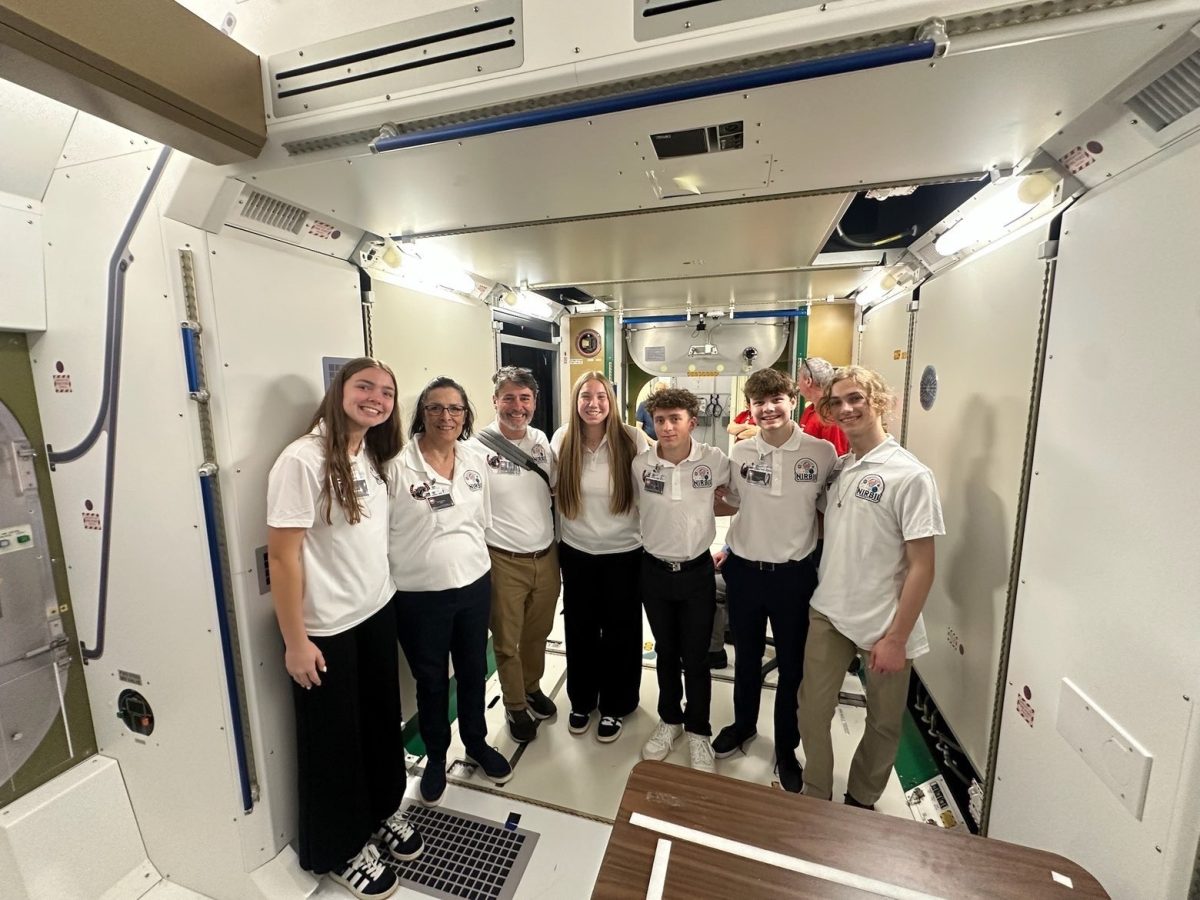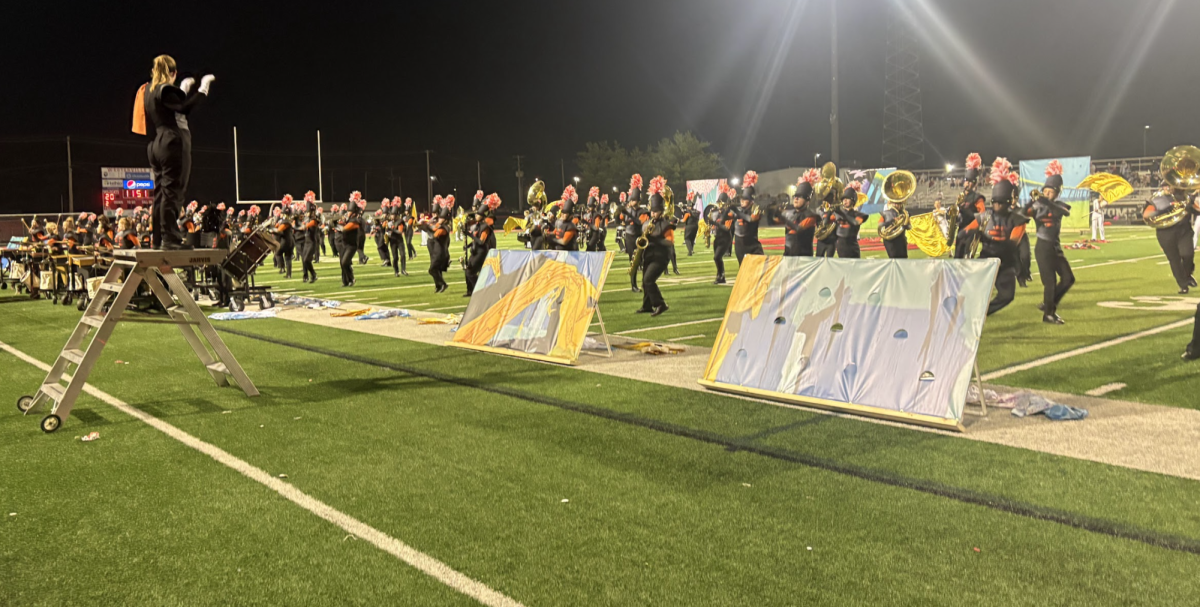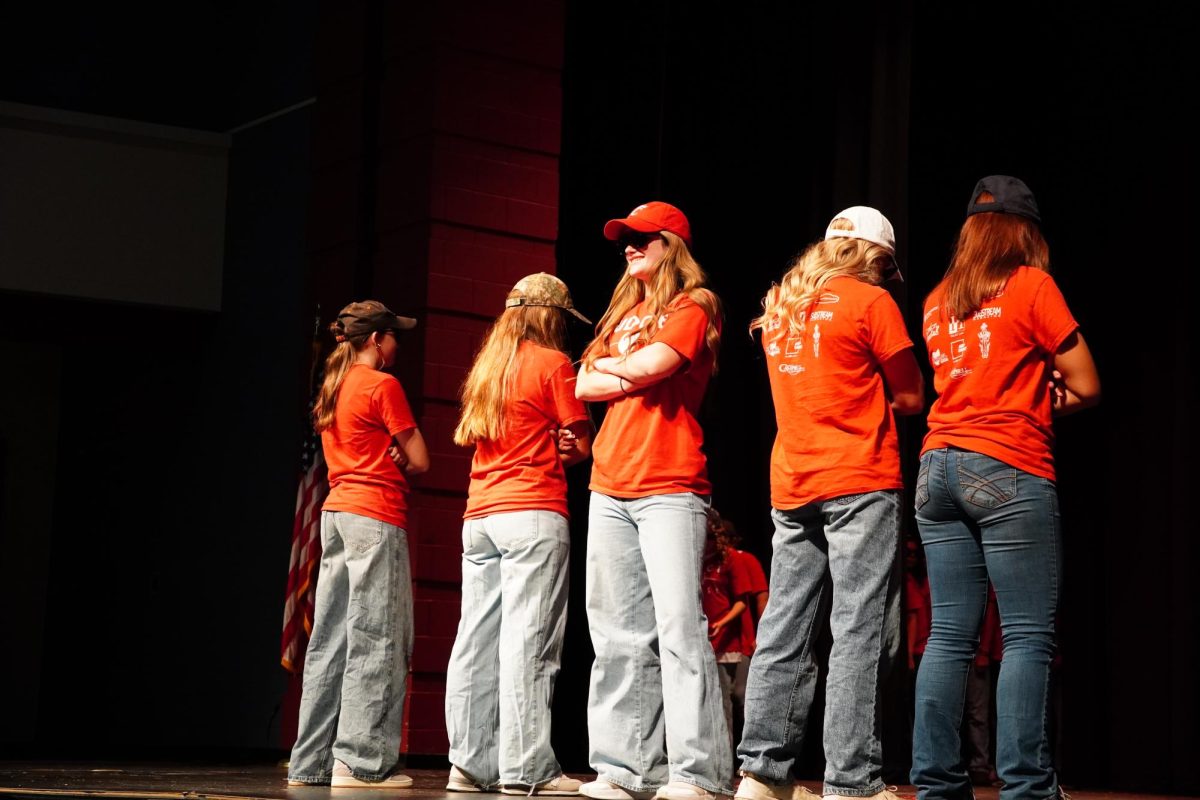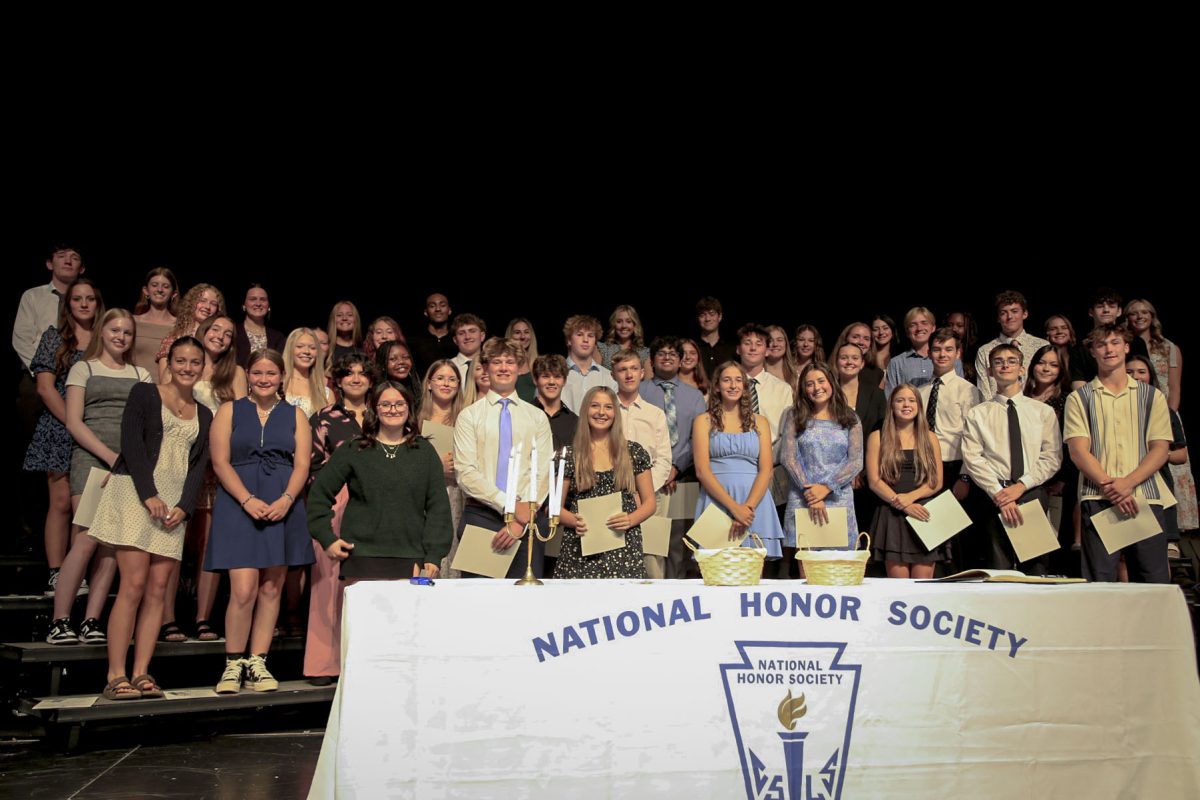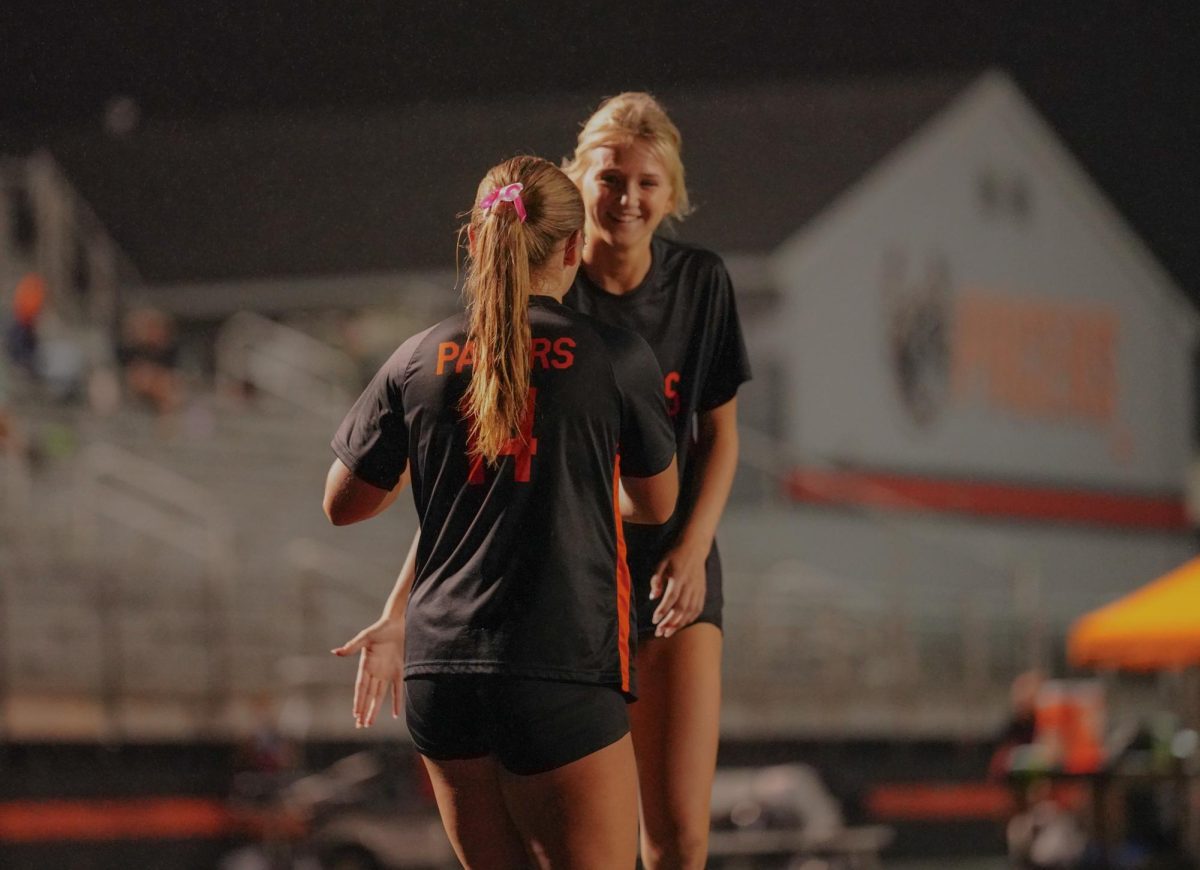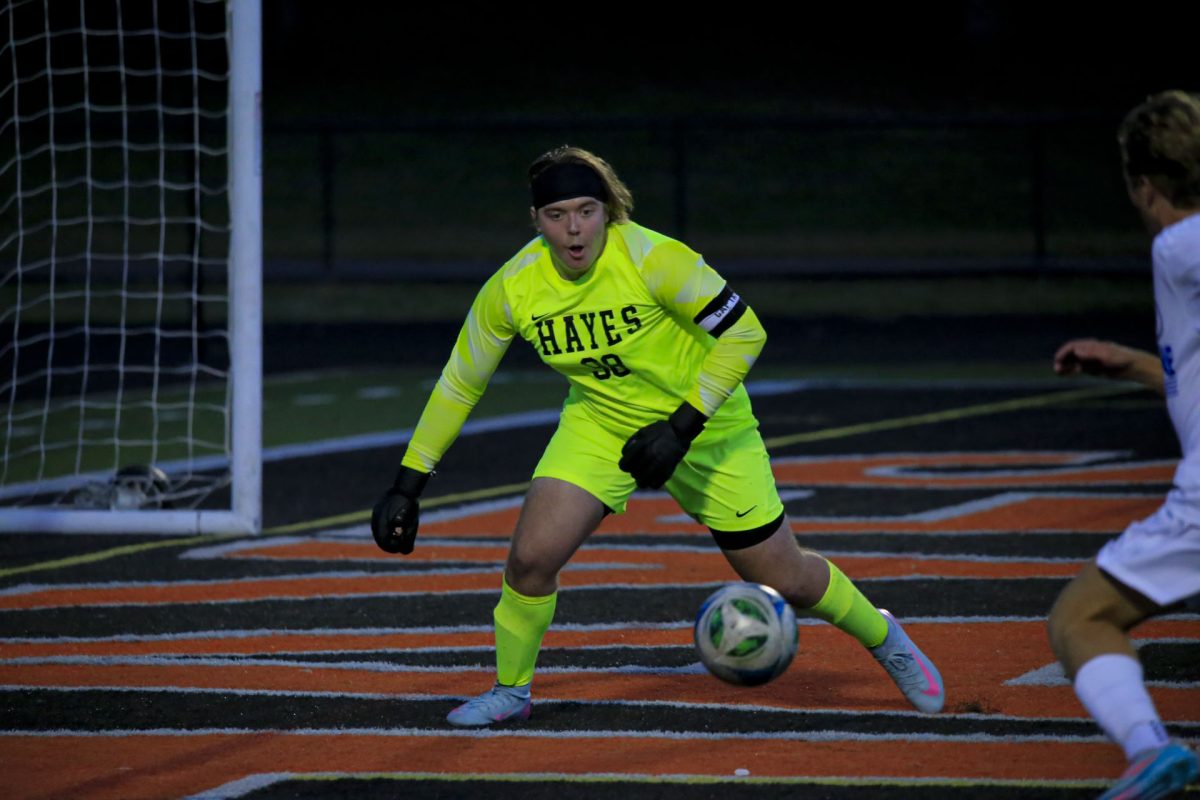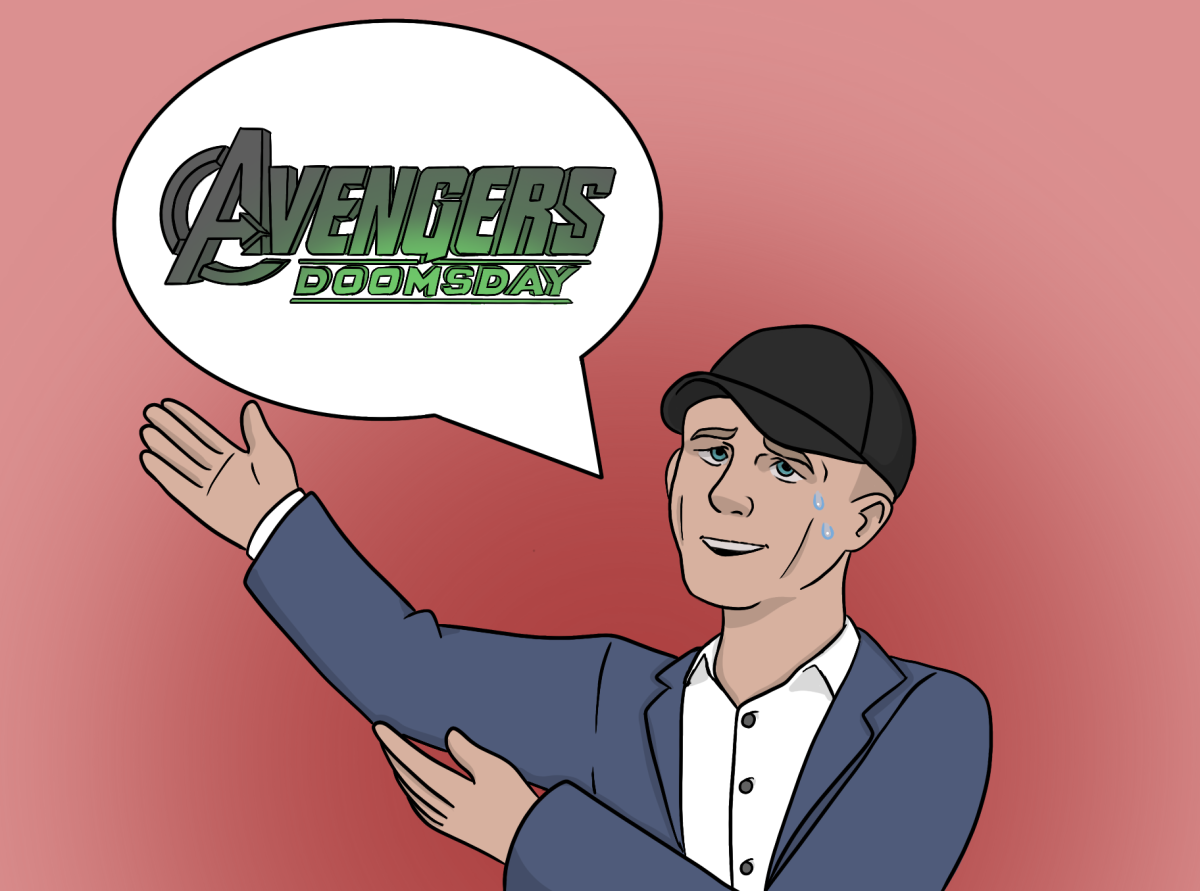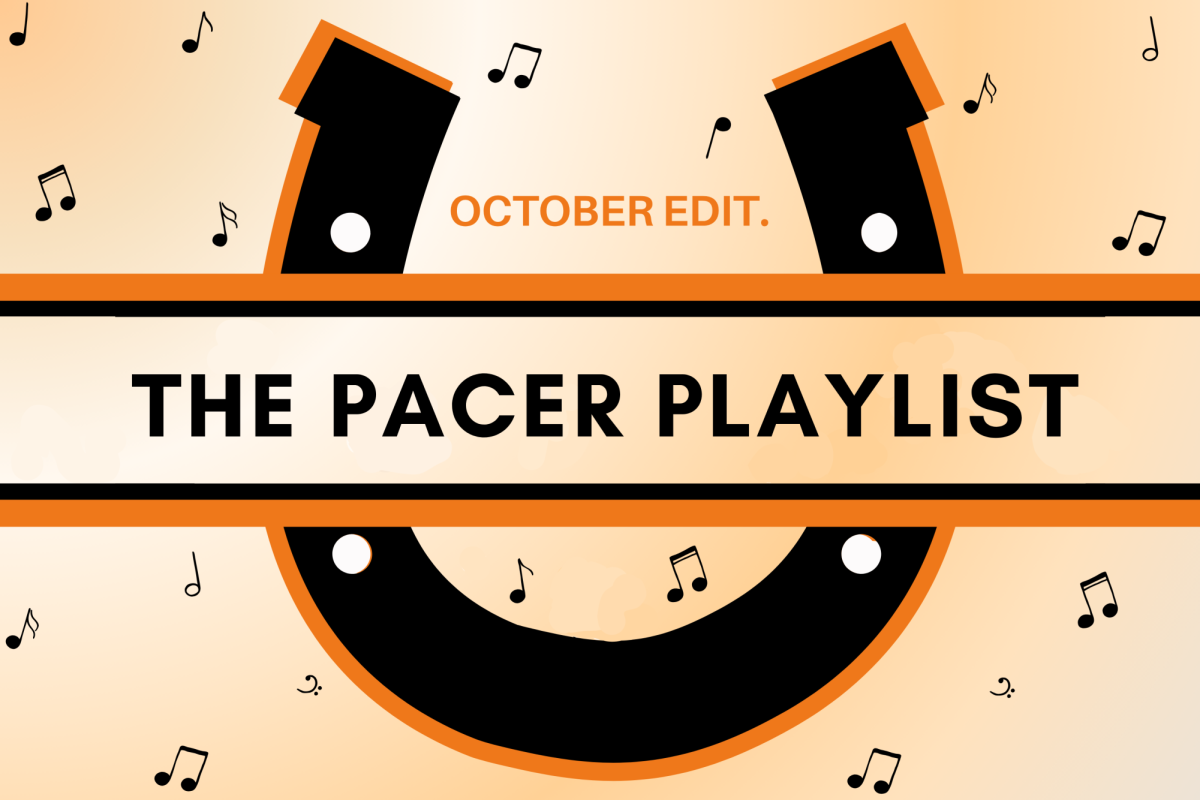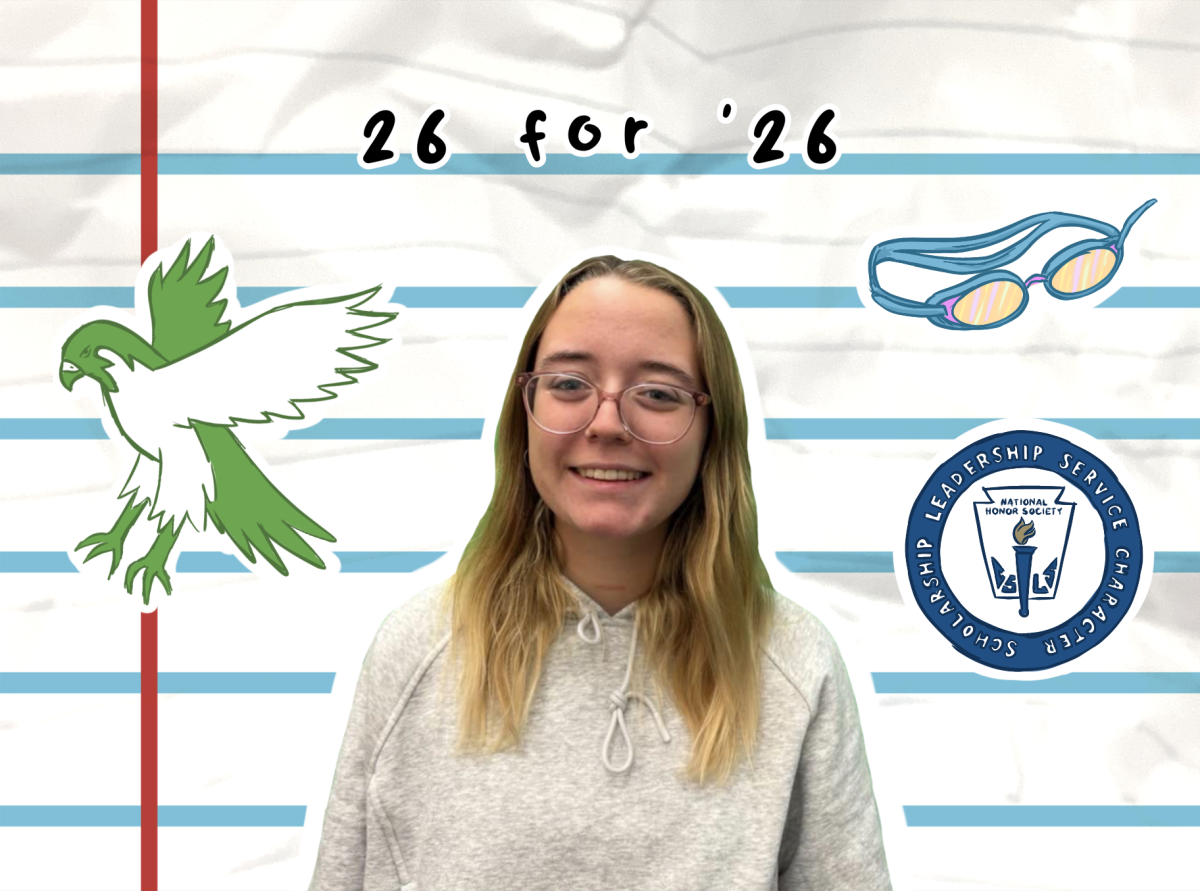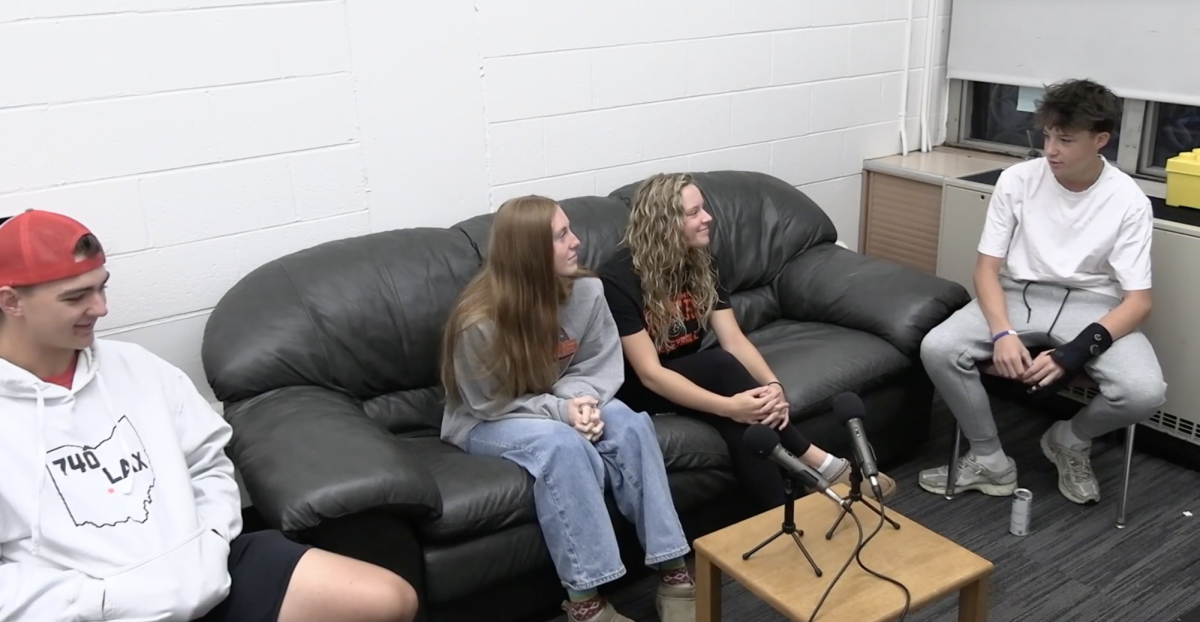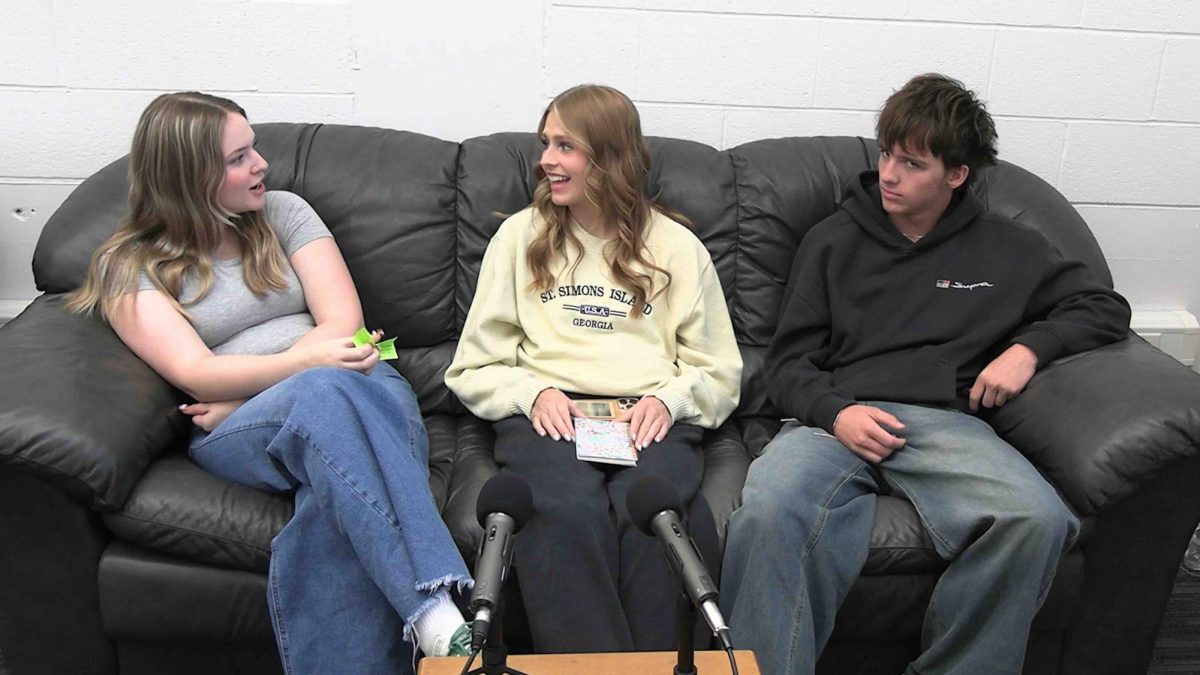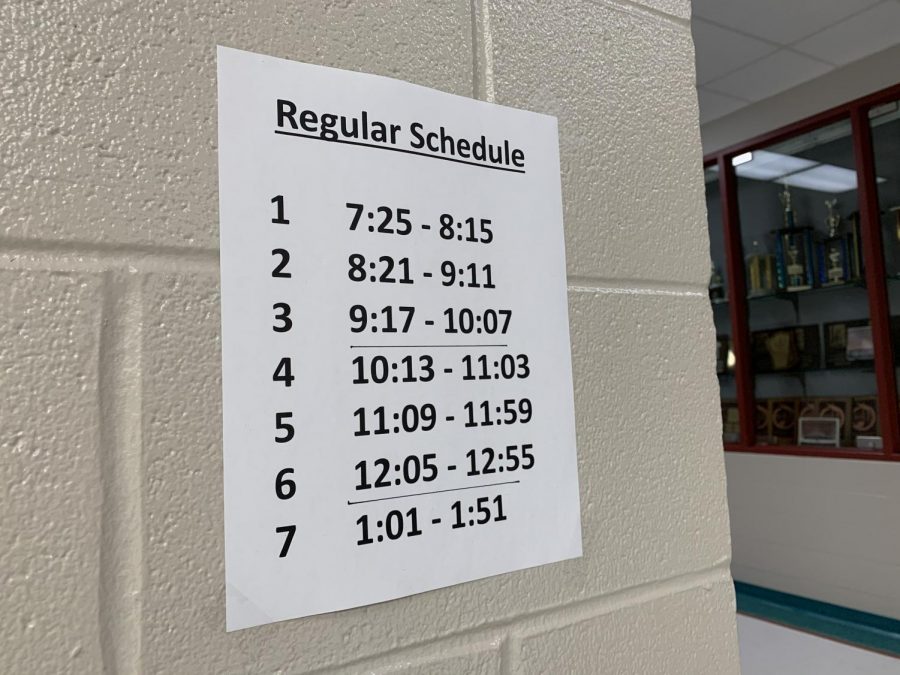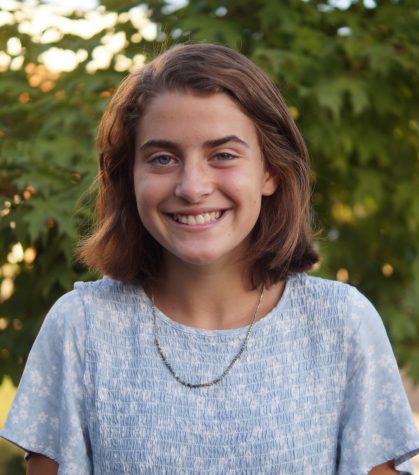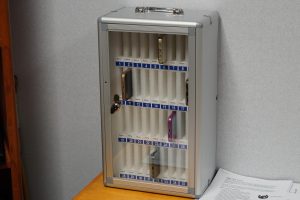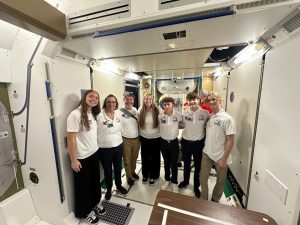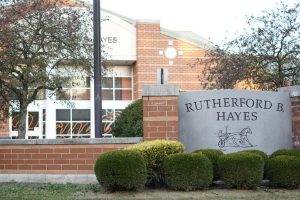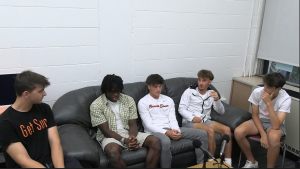School schedules look different this year due to COVID-19
The 2020-2021 school year operates on a seven period schedule. This creates longer class periods and time after school to reach teachers virtually.
October 9, 2020
After abruptly leaving in the spring of the 2019-2020 school year due to COVID-19, plans for returning to school in any form are going to look very different from school as we know it.
While the status of school still remained unpredictable in the spring and the longevity of the virus was unknown, assumptions weren’t quite being made about the fall yet, so the counseling staff continued as normal organizing students’ schedules, a process that continues through the summer.
“Initially when we met with students back in February and even at the time school closed in March, we were still anticipating that we would have the regular nine-period schedule,” counselor Chris Downey said.
But mid-to-late June, the district began the process of drafting a master school schedule to accommodate for students going online and to limit contact within the school as much as possible.
“Once we started getting applications in for the online students, we saw somewhere around 25% of students at Hayes were going to be a part of that online academy, so more teachers were going to need to be dedicated to that,” Downey said. “That’s what changed the calculus of the master schedule.”
With two teachers in each core subject from Hayes opting to help teach the online academy students, each department lost teachers from the in-person school setting. This led to a switch in teachers’ specializations and decisions regarding which classes the department will offer this year.
Social Studies department chair Greg White helped administrators and counselors in the process of making these decisions within the Social Studies department.
“With state testing, U.S. History and Government were really important as far as making sure we had enough sections in that, but the state also says that students need to complete World Studies or an equivalent course their freshman year, so we had to make sure we had enough classes for that,” White said. “Those three classes were our first priority. After that, making sure we were providing as many opportunities as possible with our honors-level courses, AP courses, and our electives.”
According to White, as the department had to prioritize classes offered with the limited available teachers, AP European History was cut from the classes offered this year, and classes like Sociology and Current Issues faced changes including the teachers teaching the class and the availability of the class.
The master schedule changes for the district not only limits the classes offered but also the amount of time students have with their teachers because the hybrid schedule only offers two to three days of in-person instruction. With this, counselors worked to adjust the schedule to ensure as much time as possible to connect students and teachers.
“The district had decided that the teachers needed some time in the afternoon to communicate with the students that were at home on their blended days,” Downey said. “Once the district decided the school day was going to end at 1:50 instead of 2:30 like it did last year, a nine-period schedule with thirty-minute classes wasn’t going to work out very well, so that was another reason why we wanted to do seven periods with fifty minutes so teachers had time to give quality instruction in the classroom.”
The extra time at the end of the day is meant to offer time for students and teachers to reach out to each other, but many teachers feel they must be available all day as their other students are simultaneously working at home and the time after school isn’t always sufficient for each of their students’ needs.
“For me personally I feel like I’m on call most of the time,” White said. “I’m trying to check my email a lot more frequently, setting up Google meetings or Canvas conferences, different things like that to make sure that I’m available when students have questions.”
Junior Rachel White said the time after school has helped her by giving her time to ask questions on the days she’s at home.
“Definitely having those teachers there with that designated time for online calls is really nice because when you’re at home learning stuff on your own, it can definitely be more confusing,” Rachel said. “So knowing the teachers are there and I can go to them to ask for help is really nice.”
Many students, including Rachel, had to reconsider their class plans for the year with less available periods.
“I was going to have a lot of APs junior year and then a little bit less senior year but it’s flipped now because I couldn’t fit all of them in this year with less periods, so that is a little bit frustrating but you know it’ll all work out,” Rachel said.
While the schedule shifts changed many students’ plans for their remaining years in high school, the counselors worked on creating each student’s schedule with a similar focus as each department’s class offerings as they had to prioritize required classes and credits.
“For seniors, we focused on making sure they got the classes they needed for graduation and then reaching out to them if they had signed up for all seven classes,” Downey said. “[Many students] had to make choices this year because we only had six periods of class and then lunch.”
Other parts of the new schedule worked around regulations made to keep the school safe from the spread of COVID-19.
“With all the social distancing requirements, we knew an additional lunch period was going to be required,” Downey said. “We also wanted to minimize the number of transitions in the day to reduce the number of times students were in the hallway together.”
In order to maximize class time on a limited schedule, Hayes’ house periods were not included in this year’s schedule.
“I definitely do miss our house class period,” Rachel White said. “But I do understand why we can do it this year, just hopefully we’ll have a house next year.”
While returning to school in the midst of a pandemic has led to some losses in the typical school structure, students and teachers are pleased to be able to return in some form.
“I’m incredibly thankful for all the work that our counseling staff and our administrators have put in to make it possible for us to at least be in the classroom for as many days as we are now,” Greg White said. “I think it’s a lot more valuable and it allows us to do a better job as teachers and students when we have a chance to meet in person.”
Even with all of the changes that had to be made this year, everyone involved has shown much understanding.
“It is definitely a weird year,” Downey said. “But in between the building administrators, the counselors, the teachers, students, I felt like everything came together very well and it helped us have a pretty successful start to the school year.”


